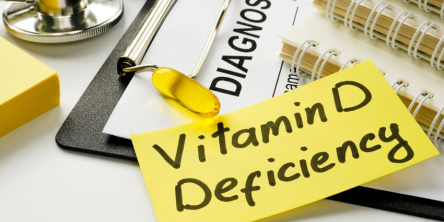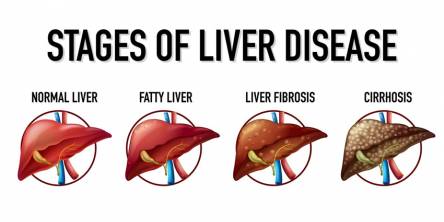What Does An Interventional Pain Doctor Do?

One type of a pain specialist is an interventional pain doctor. Their focus practice is a subspecialty of pain medicine that has interventional techniques. Those techniques include a more substantial and invasive method of managing and treating various pain conditions.
One such method is the oldest interventional technique for managing a patient’s discomfort by splicing and/or re-sectioning a pain tract’s neural fiber. This pain fiber tract runs long ways in the area of or next to the spinal cord.
Without a doubt, all nerve fibers that transmit pain information will go into the spinal cord at the spinal column, aka the vertebral column. The spinal cord receives signals of aching sensations from the neural fibers as well as to the brain, typically these are found together along these areas
As such, the pain doctor has it fairly easy in identifying the pain source is able to treat the symptoms of discomfort a patient is experiencing. By interrupting the signal’s transmission to the brain and spinal cord, they can treat the symptoms provide significant reduction, providing complete relief for the patient throughout their body.
A Simpler Explanation
To put this in a more common image, picture a row of houses in a straight line on a road with a dead end. Along that road there is one phone cable and each house is receiving their phone service from it. They are each connected by a branch coming off of that main line. If the main cable is cut anywhere along that road, then each house along the cable will lose their phone service from where the splice happens.
This principal is the same as it applies to pain fibers being spliced along the spinal cord. Thus, the information being transferred from connection below the cut won’t reach the brain or the spinal cord. Therefore, the pain doctor should be careful as they cut the neural fibers so that they are only slicing the ones that are transmitting pain information. The doctor has to avoid making any cut of the neural fibers that are controlling the patient’s motor nerves. This method of pain intervention is usually a last resort.
Interventional pain doctors have a wide variety of techniques that are advanced and sophisticated at their disposal today. They vary in the level of invasiveness and permanence in how they assess and treat the variety of pain and discomfort conditions. When making the decision of which treatment option is appropriate, the doctor will consider the patient’s particular condition.
For instance, a patient with cancer-related pain which arises from tumor-related neural fiber compression and/or bone metastases could have their pain effectively managed by radiation therapy. This is where low doses of radiation is delivered to the targeted area and ablate the inflamed or irritated sensory nerves.
Other Techniques
Deep brain electrical stimulation or spinal cord stimulation are other techniques a pain doctor may utilize to manage non-cancer pain. However, the pain doctor may recommend a trial with more conservative treatment first before moving on to a more interventional approach.
For example, a pain doctor could recommend oral pain medications first that provides a temporary relief for a patient’s discomfort. This could include OTC (over-the-counter) analgesics like NSAIDs (non-steroidal anti-inflammatory drugs) or prescription pain relievers like opioid drugs.
If the oral medications are ineffective in pain relief being received aesthetic medications can be delivered to the area directly at the affected nerves. This is done by either epidural or intrathecal injections which will directly deliver the medication to the affected area. With so many varieties tools, a pain doctor can treat a large variety of pain conditions.
Similar Articles
Indigestion, also known as dyspepsia, is one of the most common digestive complaints affecting people of all ages. It often manifests as bloating, heaviness after meals, burning in the stomach, or discomfort in the upper abdomen.
Imagine this: Lying comfortably inside an airtight chamber and taking deep, cleansing breaths of pure oxygen while your body quietly thanks you for its extra dose of healing power.
Vitamin D, often called the “sunshine vitamin,” is one of the most essential nutrients for overall health. It plays a crucial role in calcium absorption, bone health, immune function, and hormone regulation
Money can buy luxury, but not health. Modern sedentary lifestyles, dominated by screens, minimal physical activity, unhealthy diets, addictions, and stress, are crippling our society with diseases.
The liver is a Vital organ which is responsible for a number of essential functions that include detoxification of harmful substance, metabolising nutrients, production of bile for digestion, regulates blood sugar levels by storing and releasing glucose, synthesis of protein, break down of fats through Beta- oxidation.
In ancient times when there was no professional method of health examination, people usually figured out health problems because of signs on one’s appearance. The change of skin color might be one of the most common signs that show something unusual inside the body.
When looking for help for substance abuse, finding and selecting the right drug rehab facility is a crucial step toward a patient's recovery. While there are plentiful options available, it can be overwhelming for people to choose the best one suited to their individual needs.
Fatty Liver Disease (Steatosis) is a common condition which denotes the excessive accumulation of fat in the liver. The liver is located in the upper right-hand portion of the abdominal cavity on the stomach, kidney and intestines. The liver is the major metabolic organ which is found in vertebrate animals
According to the World Health organization (WHO), Mental disorders are on the rise in this era, every one in eight individuals is suffering from a mental disorder. There are a variety of mental health disorders









